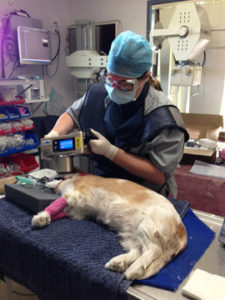 To perform a thorough dental examination and assessment, your pet must be under general anaesthetic.
To perform a thorough dental examination and assessment, your pet must be under general anaesthetic.
Most pets are patient and very well behaved. They will let us look in their mouth and at their back teeth. Some pets aren’t so welcoming.
To do a thorough dental assessment, we need to place a probe under the gum around every tooth. We are looking for pockets. A pocket can indicate bone loss around the tooth or a hole in the tooth and developing infection. We also need to look at the inside of each tooth.
We are also looking for fractured teeth, worn teeth, enamel loss and/or misalignment of teeth. This is very hard to do when your pet continually moves their head around.
We may need to take a dental x-ray of your pets tooth. The dental imaging equipment is a very expensive piece of equipment. To take dental x-rays, we need to place plates in your pets’ mouth that capture the image of the tooth. This would not be possible in an awake pet.
When we are cleaning your pets’ teeth with the ultrasonic scaler, it feels similar as it does for us at the dentist. Most pets will not tolerate this. We also need to clean the inside of your pets’ teeth as well as underneath the gum. It is not possible to do this thoroughly or comprehensively in an awake pet.
To ensure your pet receives the most comprehensive dental assessment as well as a thorough scale and polish, it is essential that your pet in under general anaesthetic.
At Veterinary Happiness, we appreciate that clients are nervous about their pets undergoing an anaesthetic. We use very high quality, safe anaesthetics and we have a fully qualified, very well trained nurse monitoring the anaesthetic at all times.
If you have any questions or concerns, please speak to the Veterinarian at your Surgical Admission Consultation or call us on 3206 7911.